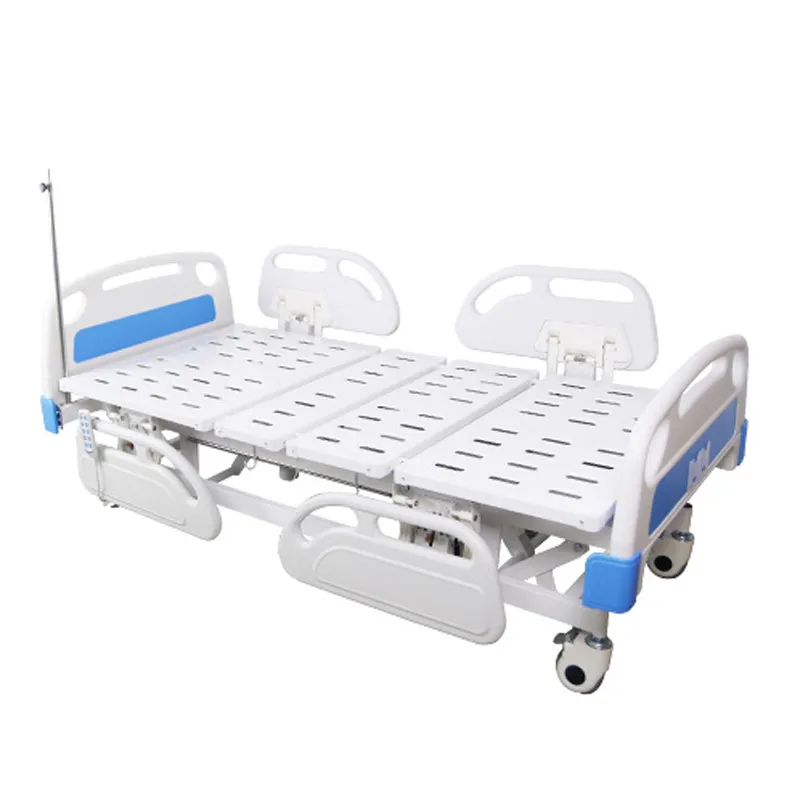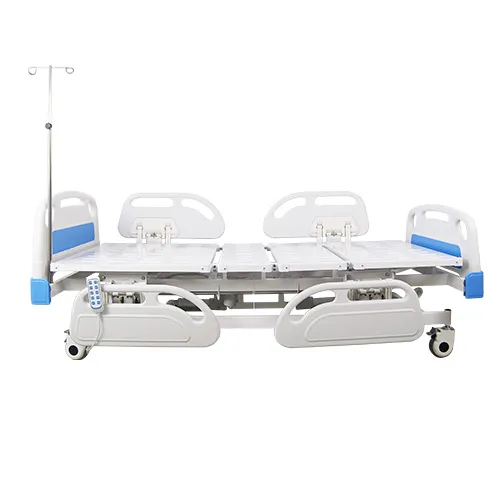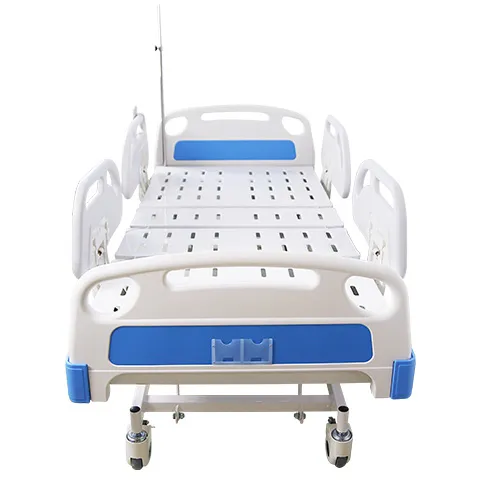A practical question is often asked: What is the actual service life of a hospital electric bed? The answer may seem simple, but to provide a professional and reliable range, we must break down "lifespan" into several dimensions: the product's design life (years/cycles), the lifespan of key components (such as drivers, controllers, and mattresses), the actual service life (affected by usage intensity and maintenance), and how laws, standards, and maintenance strategies impact this timeframe.
This article provides a professional and detailed answer to the question, "What is the service life of an electric hospital bed?" from four perspectives: standards, manufacturer data, component characteristics, and maintenance practices. It also offers practical advice to help purchasers, nursing facilities, and home users make informed decisions.

What is the service life of an electric hospital bed?
In the real world, the service life of an electric hospital bed typically ranges from 5 to 15 years, but this range is influenced by many factors: Hospital-grade, heavy-duty, all-weather beds typically have an expected lifespan approaching or reaching approximately 10 years with regular maintenance. For home or light-use scenarios, hospital electric beds can also last 5–10 years with proper maintenance. Some manufacturers or service contracts (including comprehensive maintenance) can extend the warranty period and expected service life of key bed components to around 10 years or more.
Electric Hospital Bed: Why is the lifespan so variable?
Four key factors determine the lifespan:
1. Product Category and Design Quality
Hospital-grade/heavy-duty hospital electric beds utilize higher investment in materials (steel structure, wear-resistant surfaces), drive mechanisms (industrial-grade linear actuators), redundant safety features, and electrical protection. Consequently, their theoretical lifespan and maintainability are superior to simpler home models.
2. Intensity of Use (Duty Cycles/Number of Cycles)
The lifting and lowering movements of an electric hospital bed are essentially mechanical reciprocating motions. The more times the bed is adjusted daily and the longer it operates, the faster the critical transmission mechanisms (linear actuators, gears, screws, etc.) accumulate wear. Linear actuator life is often measured in cycles or B10 life (the number of cycles within which 90% of the devices will fail). Manufacturers provide life estimates based on workload and duty cycle.
3. Maintenance and Care Level
Proper preventive maintenance of hospital electric beds (regular lubrication, tightening checks, electrical inspections, wheel and bearing replacement, software/controller upgrades, etc.) can significantly increase the "expected lifespan." Conversely, lack of maintenance can reduce a 10-year useful lifespan to less than 5 years.
4. Environment and Usage (Overload, Corrosive Cleaning Agents, High Humidity, and Impact)
High humidity, frequent use of corrosive disinfectants, repeated impact, and overloading (patient weight exceeding the rated load capacity) can shorten the lifespan of an electric hospital bed and its electromechanical components. These factors explain the difference in lifespan between high-frequency hospital use and low-frequency home use.

Electric hospital bed component lifespan: Which fails first and which can be replaced?
An electric hospital bed isn't a single, fixed "overall lifespan"; it's a system comprised of multiple components. Below, we list key components, their typical lifespan characteristics, and recommended replacement cycles, ranked from most vulnerable to most durable.
1. Linear Actuator/Drive Motor (Most Critical and Most Consumable)
• Characteristics: Responsible for lifting and segmenting, withstanding mechanical loads and repeated cycling. Lifespan is highly dependent on load, duty cycle, and lubrication. Electric hospital bed manufacturers often provide data in terms of B10 cycles or stroke lifespan. Under high-intensity hospital use, the actuator may need replacement every 5–8 years; under low-intensity home use, the actuator lifespan can be longer.
2. Electronic Control Box and Remote Control
• Characteristics: Significantly affected by voltage fluctuations, humidity, and frequent operation. Electronic failures often manifest as malfunctioning buttons, unresponsive movements, or abnormal operation. Electronic modules can be repaired or replaced; hospital electric beds generally offer a 1–3 year manufacturer warranty, with subsequent module replacements primarily required.
3. Bed Structure (Frame, Welded Components)
• Features: High-quality steel/aluminum alloy frames offer a long service life, but corrosion, impact, or overloading can lead to premature failure. Structural fatigue cracks may necessitate replacement of the entire bed or decommissioning. Structural components typically last over 10 years under normal conditions and proper use.
4. Mattress (Pressure Ulcer Prevention/Comfort Components)
• Features: The mattress is not considered an "electromechanical component" of the hospital electric bed, but it directly impacts care delivery and requires frequent replacement. Industry recommendations (both healthcare facility guidelines and manufacturers) typically recommend replacing the mattress every 3–5 years, though the mattress lifespan is often shorter than that of the bed. The American Hospital Association/industry resources recommend a 5-year mattress replacement cycle.
5. Casters, Rails, Guardrails, and Connectors
• Features: Wear parts are easily replaced. Issues such as poor caster rolling, brake failure, and rail wear can be extended through regular maintenance.
6. Surface Coating and Anti-Corrosion Layer
• Characteristics: Disinfectants and frequent scrubbing increase the risk of coating failure. Once this occurs, exposed metal is more susceptible to corrosion, which can impact structural safety in the long term. Regular surface maintenance and the correct choice of disinfectant can extend the lifespan.

Why are electric hospital beds more durable and safer?
Electric hospital beds are regulated by standards. IEC 60601-2-52 (Medical Electrical Equipment – Part 2-52: Particular Requirements for Medical Beds) is the internationally recognized standard for the design and performance of hospital beds. It specifies requirements for mechanical safety, electrical safety, labeling, and immunity. Choosing an electric hospital bed that meets or exceeds the requirements of IEC 60601-2-52 generally means greater investment in materials, design, reliability testing, and risk control, resulting in better long-term performance.
How can maintenance extend the lifespan of an electric hospital bed?
Data from the hospital electric bed industry and manufacturers indicates that standardized daily and periodic maintenance can significantly extend the lifespan. The following is a practical maintenance checklist and recommended schedule (which can serve as a maintenance SOP for hospitals and homes):
1. Daily/Each Shift (Daily Inspection)
• Clean the bed surface, mattress surface, and side rails, inspecting for obvious damage or stains;
• Check the bed wheel brakes for effectiveness;
• Perform a simple test of the electric functions (to ensure normal lifting and sectional movement).
2. Monthly/Quarterly (Functional Inspection)
• Inspect and tighten key bolts, hinges, and connectors;
• Clean and lubricate guide rails and joints (using the manufacturer's recommended lubricant, usually silicone oil or manufacturer-specified grease);
• Check the insulation of the remote control cable, connectors, and power cord for cracks;
• Inspect the mattress for integrity and leaks (for air mattresses).
3. Semi-annual/Annual (Preventive Maintenance/Technical Overhaul)
• Comprehensive electrical safety testing (insulation resistance, grounding) by an authorized service engineer;
• Drive operating current and noise testing;
• Replacement of wearing parts (casters, seals, consumables) and maintenance logs;
• Load testing and lifespan prediction of key components (based on the manufacturer's B10/MTBF specifications).
Maintaining maintenance records and proactively replacing parts before failures are key to turning "theoretical lifespan" into "actual lifespan."

Electric hospital beds: When should they be replaced, not repaired?
Common replacement decision-making criteria for hospitals and nursing facilities include:
• Age threshold: When a bed approaches or exceeds the manufacturer's recommended "economic life" (e.g., 8–10 years), it should be evaluated for replacement. Many institutions use an 8–12-year replacement cycle as a reference for asset management.
• Frequent Failures: A significant increase in the number of repairs required for a single device within a short period of time (e.g., more than three major overhauls within six months) indicates aging components and a surge in repair costs. Replacement should be considered to reduce downtime and risk.
• Safety/Compliance Risks: Structural cracks, broken welds, or failure of key safety features (such as damaged emergency stop or limit sensors) may not restore the original safety level even after repair. Therefore, replacement should be prioritized.
• Parts Out-of-Stock or Discontinued: When a key drive or control module has been discontinued by the manufacturer and replacements are difficult to obtain, continued repairs may result in long-term operational risks.
Environmental Protection and Obsolescence: How should the end-of-life of an electric hospital bed be handled?
Electric hospital beds contain electronics, metal, and foam materials, and their disposal must comply with local medical waste and electronic waste regulations:
• Electronic module recycling: Controllers, motors, and other electronic components should be recycled as electronic waste.
• Hazardous material disposal: Some used mattresses or electrical components may contain controlled materials and must be disposed of through compliant channels.
• Reusable parts: Structural or serviceable parts that have passed inspection can be used for remanufacturing or refurbishment.
Complying with regulations is not only a regulatory requirement but also a part of a hospital's/institution's social responsibility.
How can I request a catalog or quote?
Simply reach out to our sales team via email or contact form—list the products you are interested in (e.g., electric wheelchair, hospital bed, walker, shower chair). Provide quantities and customization needs. We will promptly share our latest product catalog, QR-based factory tours, and wholesale quotes featuring low-price promotions, OEM packaging options, and bulk discounts.
As your trusted Chinese supplier and manufacturer, Dayang Medical ensures high-quality, certification-backed equipment for global procurement success.










